JAJSKL0I october 2004 – may 2023 TPS715-Q1
PRODUCTION DATA
- 1
- 1 特長
- 2 アプリケーション
- 3 概要
- 4 Revision History
- 5 Pin Configuration and Functions
- 6 Specifications
- 7 Detailed Description
- 8 Application and Implementation
- 9 Device and Documentation Support
- 10Mechanical, Packaging, and Orderable Information
パッケージ・オプション
デバイスごとのパッケージ図は、PDF版データシートをご参照ください。
メカニカル・データ(パッケージ|ピン)
- DCK|5
サーマルパッド・メカニカル・データ
発注情報
6.5 Typical Characteristics
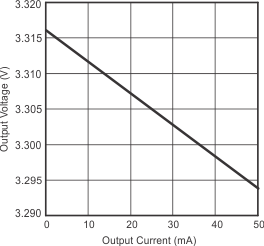
| VIN = 4.3 V, COUT = 1 μF, TJ = 25°C |
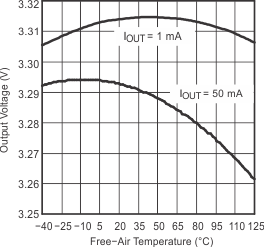
| VIN = 4.3 V, COUT = 1 µF |
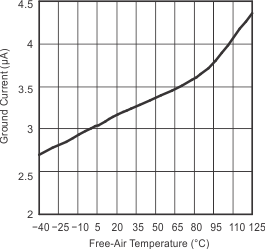
| VIN = 4.3 V, VOUT = 3.3 V, IOUT = 1 μF |
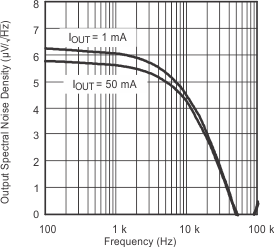
| VIN = 4.3 V, VOUT = 3.3 V, COUT = 1 μF |
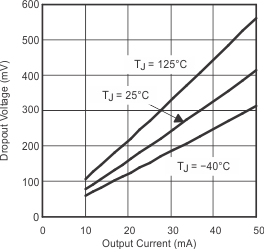
| VIN = 3.2 V, COUT = 1 μF |
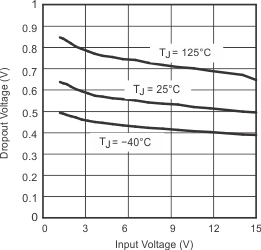
| IOUT = 50 mA |
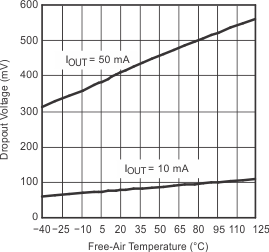
| VIN = 3.2 V |
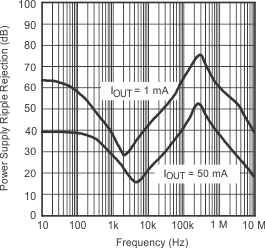
| VIN = 4.3 V, VOUT = 3.3 V, COUT = 10 μF, TJ = 25°C |
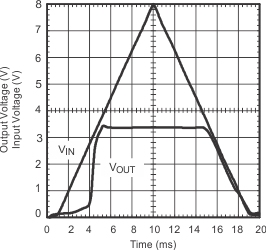
| VOUT = 3.3 V, RL = 66 Ω, COUT = 10 μF |
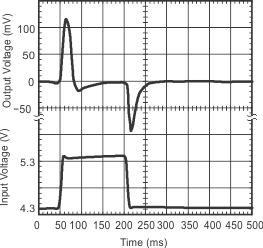
| VOUT = 3.3 V, IOUT = 50 mA, COUT = 10 μF |
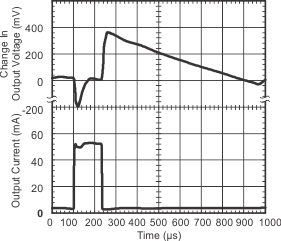
| VIN = 4.3 V, VOUT = 3.3 V, COUT = 10 μF |
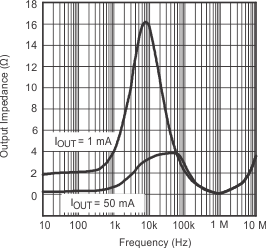
| VIN = 4.3 V, VOUT = 3.3 V, COUT = 1 μF, TJ = 25°C |

| VIN = 4.3 V, COUT = 1 μF, TJ = 25°C |

| VIN = 4.3 V, COUT = 1 µF |

| VIN = 4.3 V, VOUT = 3.3 V, COUT = 1 μF |

| VIN = 4.3 V, VOUT = 3.3 V, COUT = 1 μF |

| VIN = 3.2 V, COUT = 1 μF |

| IOUT = 50 mA |

| VIN = 3.2 V |

| VIN = 4.3 V, VOUT = 3.3 V, COUT = 10 μF, TJ = 25°C |

| VOUT = 3.3 V, RL = 66 Ω, COUT = 10 μF |

| VOUT = 3.3 V, IOUT = 50 mA, COUT = 10 μF |

| VIN = 4.3 V, VOUT = 3.3 V, COUT = 10 μF |